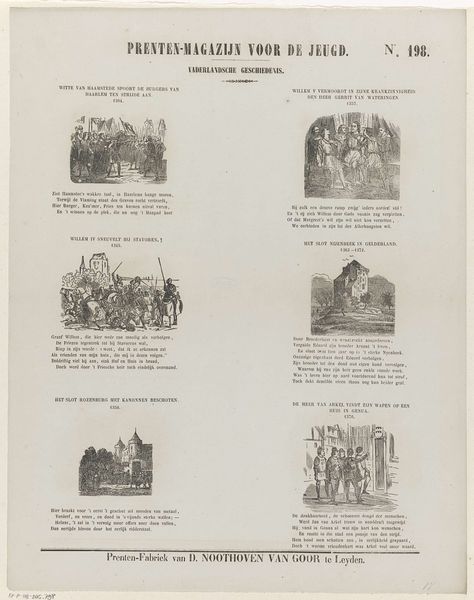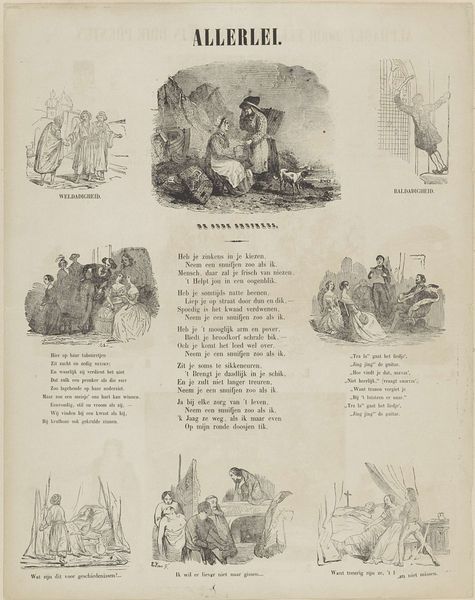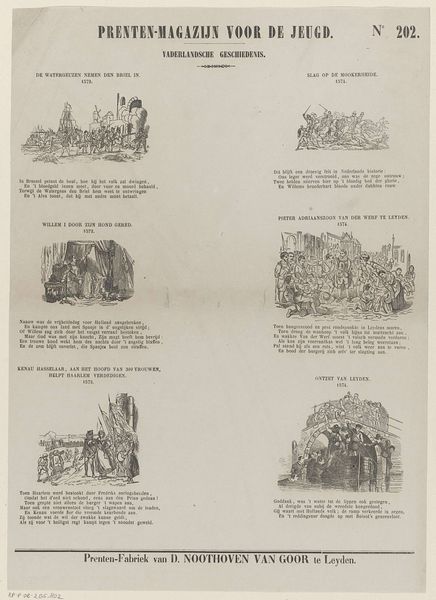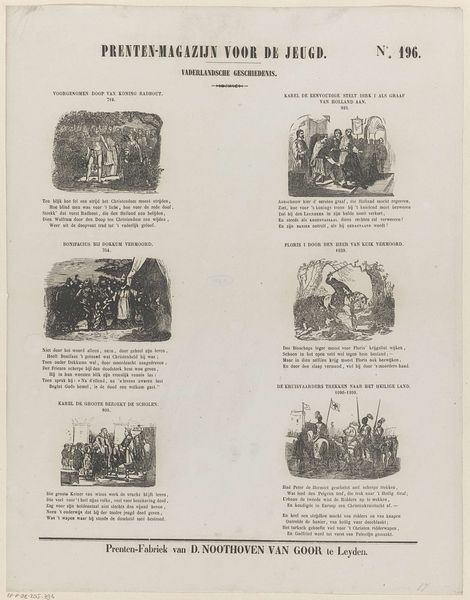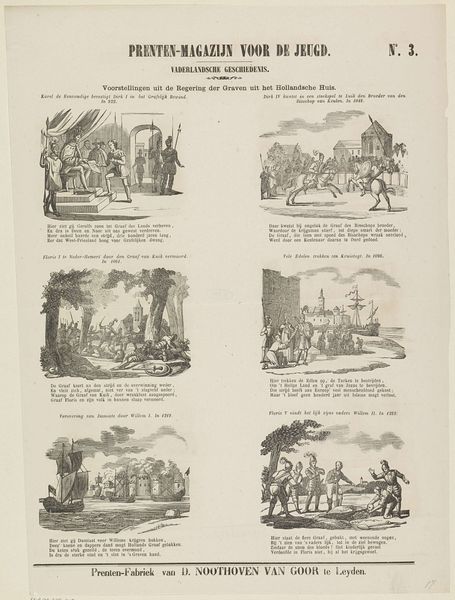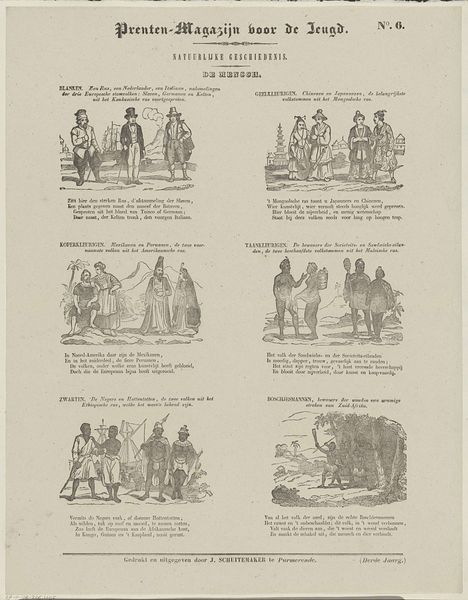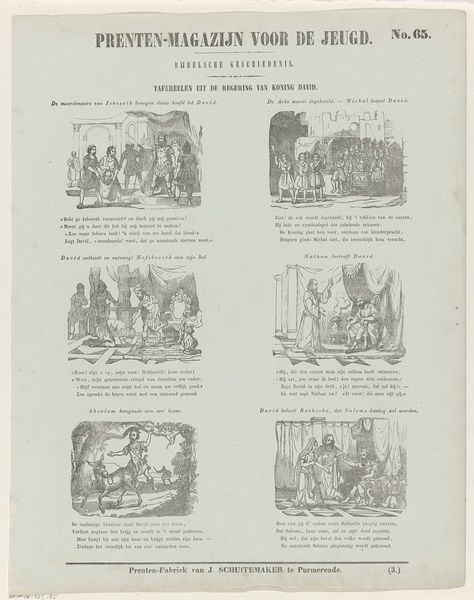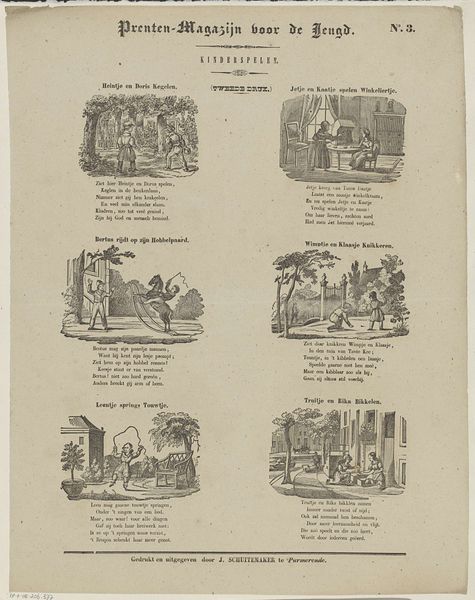
print, paper, engraving
#
narrative-art
# print
#
paper
#
romanticism
#
genre-painting
#
academic-art
#
engraving
Dimensions: height 428 mm, width 343 mm
Copyright: Rijks Museum: Open Domain
Curator: This is an engraving entitled "Ontleend uit de gewijde geschiedenis," which translates to “taken from sacred history,” created around 1850 by Jan Schuitemaker. It’s a print on paper featuring several vignettes. What's your initial response? Editor: There's an undeniable austerity. It has this distinctly didactic tone, I’d almost venture to say there’s an attempt to impress on youth the important principles and mores within that period. The very presentation itself as a collection evokes almost a social syllabus. Curator: I agree that its structure resembles something of a "moral lessons" pamphlet for young people. The compositions in each panel, drawn from biblical stories, are framed within very particular socio-political messages from the 19th century. I believe Schuitemaker deliberately sought to instruct on particular beliefs, to create an effect through each individual, but socially impacting narrative. Editor: You make an interesting point regarding Schuitemaker and that intent behind social impact and narrative construction; particularly concerning themes like obedience and divine authority. Consider for a moment, that a single print in 1850 could traverse social lines more easily, almost a pedagogical exercise if one seeks some progressive integration within younger minds. Curator: And given its mass-produced nature as a print, it reflects the burgeoning culture of accessible education and the role of religious narratives in shaping moral character. This work engages the viewer not as a passive observer, but more of a participatory moral student through an early lens. Editor: Absolutely. I read it now less as fine art and more as a powerful piece of social ephemera reflecting the period's value system. The medium serves the message quite distinctly, giving insight into 19th-century modes of knowledge and character development, perhaps especially in their approach to social cohesion. Curator: Reflecting back, what I gather, it serves to show an artwork like this offers a window into understanding of societal norms of the time. These pieces really give modern people understanding for past beliefs that helped to dictate living patterns. Editor: I concur. And it prompts the contemporary reader to deeply consider which silent imprints exist, that mold contemporary morality for modern younger citizens in very complex approaches within this current, technological milieu.
Comments
No comments
Be the first to comment and join the conversation on the ultimate creative platform.
